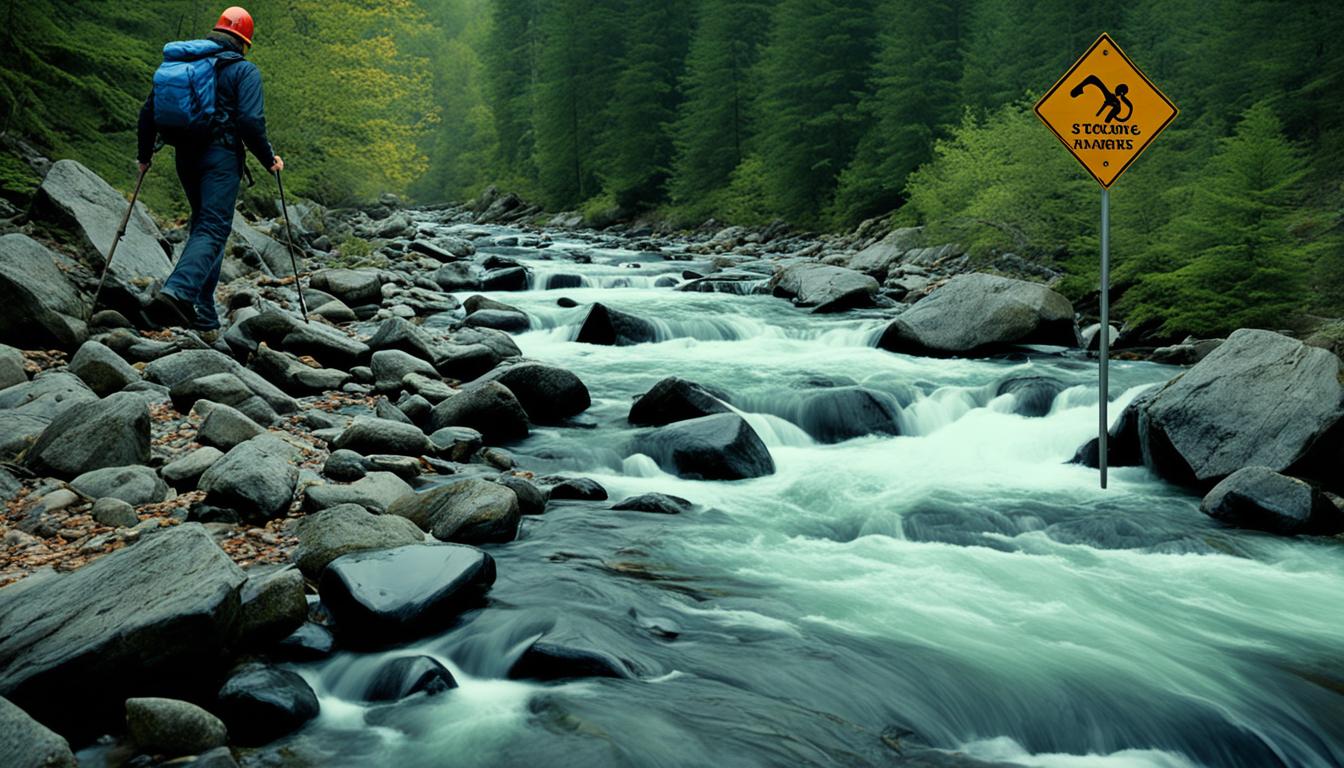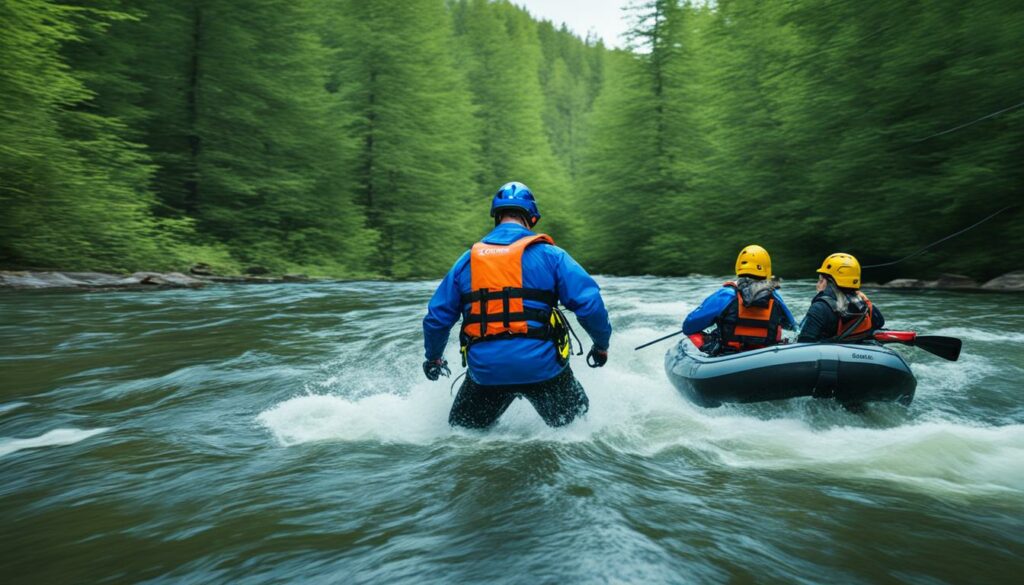
Incorporating streams into your garden or backyard can enhance the landscape and provide a tranquil environment. However, implementing essential stream safety tips during the stream construction process is crucial to mitigate risks such as flooding and contamination. By prioritizing backyard safety and adhering to landscape safety guidelines, you can create a safe, enjoyable water feature that complements your outdoor space. Awareness and precautionary measures will not only protect your property but also ensure a positive experience for everyone who interacts with the stream.
Understanding Stream Safety Requirements
Understanding the safety requirements for streams is crucial for protecting both people and the environment. Adhering to stream safety tips ensures that waterways remain safe for various activities while mitigating potential hazards. Awareness of stormwater runoff is essential as it can introduce pollutants into streams, which highlights the need for safety precautions to maintain clean water and habitats.
Importance of Safety Precautions
Implementing effective safety precautions is vital for preventing accidents and environmental damage. Proper management practices help identify potential hazards and protect against risky situations that may arise around water bodies. People should be aware of their surroundings, remain vigilant about changing conditions, and follow clear safety protocols when engaging with streams.
Regulations and Guidelines for Stream Construction
Complying with regulations for stream construction is necessary to maintain ecological health and promote public safety. Local guidelines often dictate construction practices to minimize impact on water quality, native species, and entire ecosystems. Agencies like Arlington County provide comprehensive rules that prohibit activities, such as swimming or bathing, to avoid health risks associated with bacteria levels in waters.
Essential Stream Safety Tips
Safety around streams is vital for preventing potential health risks. Following some essential stream safety tips can help protect you and your loved ones. It is important to be mindful of water quality and to take precautions to stay safe while enjoying these natural resources.
Avoid Water Contact
One of the most crucial stream safety tips is to avoid water contact whenever possible. Water can carry harmful bacteria and pollutants. Keeping water out of your eyes and mouth significantly reduces the risk of illness. Discolored water or water that has an unusual odor should be avoided, as these signs often indicate contamination.
Monitoring Water Quality
Regularly monitoring water quality is critical to maintaining a safe environment. Local authorities often conduct assessments of streams for bacteria levels and pollution. Engaging in community efforts that focus on monitoring water quality can enhance safety measures. Volunteers play an important role in this process, helping to ensure that streams remain safe for everyone.

Design Considerations for Safe Streams
Effective design considerations for streams play a crucial role in ensuring safety during stream construction. Selecting an appropriate location is essential for minimizing potential risks to nearby homes and vegetation. Moreover, addressing the slope and gradient is vital for maintaining effective flow control, which helps prevent issues such as flooding and erosion.
Choosing the Right Location
When determining the best site for stream construction, various factors must be evaluated:
- Proximity to existing structures
- Soil type and stability
- Natural vegetation and wildlife habitats
- Historical data on water flow and flood events
Choosing a location away from vulnerable areas can significantly decrease the chances of adverse impacts caused by water movement.
Proper Slope and Gradient for Flow Control
Maintaining the correct slope and gradient is critical to managing water flow in streams. A well-designed slope aids in:
- Facilitating smooth water movement
- Reducing the risk of erosion
- Creating a natural habitat for aquatic life
Guidelines for calculating appropriate slope and gradient can help achieve both safety and ecological balance in stream construction. Incorporating these design considerations not only improves functionality but also fosters a sustainable environment.
Stream Safety Tips for Garden and Backyard Settings
Integrating streams into garden and backyard areas can enhance both aesthetics and ecological health. Ensuring safety while doing so is crucial for preventing accidents and maintaining a balanced environment. Below are some essential strategies for safe interactions with streams in these settings.
Choosing Safe Plants Near Streams
Selecting the right plants near streams contributes significantly to garden safety. Focus on non-invasive species that won't disrupt the ecosystem. Here are some beneficial choices:
- Native wildflowers, which can attract helpful pollinators.
- Grasses that prevent erosion and improve water absorption.
- Non-toxic shrubs that provide wildlife habitat without posing risks to pets or children.
Incorporating these plants can support backyard safety by ensuring they thrive without harming the delicate stream environment.
Creating Safe Access Points
Establishing safe access points to streams encourages responsible interaction while minimizing risk. Consider implementing the following:
- Use durable materials like stones or gravel for paths leading to the stream.
- Install handrails where slopes are steep to assist with movement.
- Mark hazardous areas clearly to alert guests and family members.
Thoughtful planning around these access points promotes safe engagement with water features. These stream safety tips aim to foster enjoyment while ensuring everyone remains secure during their time outdoors.

Emergency Preparedness Around Streams
Preparedness for emergencies associated with streams is crucial, especially given the risk of flash floods. Developing a solid understanding of what actions to take when faced with such situations can significantly enhance safety for individuals and families. Various strategies can ensure readiness for sudden changes in weather and water levels.
What to Do in Case of Flash Floods
In the event of flash floods, immediate action is essential. Follow these steps to stay safe:
- Move to higher ground as soon as possible.
- Avoid walking or driving through flooded areas.
- Stay informed through weather alerts and warnings.
- Avoid using electrical appliances near water.
These practices are part of emergency preparedness and can help minimize risks associated with sudden flooding scenarios.
Developing a Safety Plan for Children and Pets
A comprehensive safety plan is vital for protecting children and pets during emergencies. Consider the following elements:
- Designate a safe meeting spot away from the stream.
- Ensure pets have identification tags and are microchipped.
- Keep essential supplies, such as food and water, readily available.
- Educate children on the importance of staying away from flooded areas.
Integrating these components into a safety plan for pets and children fosters a secure environment when faced with unpredictable situations.
Conclusion
In summary, implementing effective stream safety tips is crucial for ensuring the safety and well-being of both residents and wildlife. By adhering to the outlined guidelines, individuals can navigate the importance of safety measures while constructing and maintaining streams in their surroundings. Responsible stream construction not only promotes a healthier ecosystem but also prevents potential accidents that could harm people or animals.
Moreover, understanding how to choose safe locations and monitor water quality ensures that streams remain an enjoyable feature in residential areas. It is essential for homeowners to engage in responsible practices that contribute to a safer environment for families and communities. By being proactive and vigilant about stream safety, everyone can enjoy nature while fostering a sustainable habitat.
Ultimately, taking the time to implement these safety measures cultivates a culture of responsibility, encouraging both enjoyment and respect for the natural world. For the benefit of ourselves and future generations, let's commit to prioritizing stream safety and make informed choices for a safe and harmonious coexistence.








